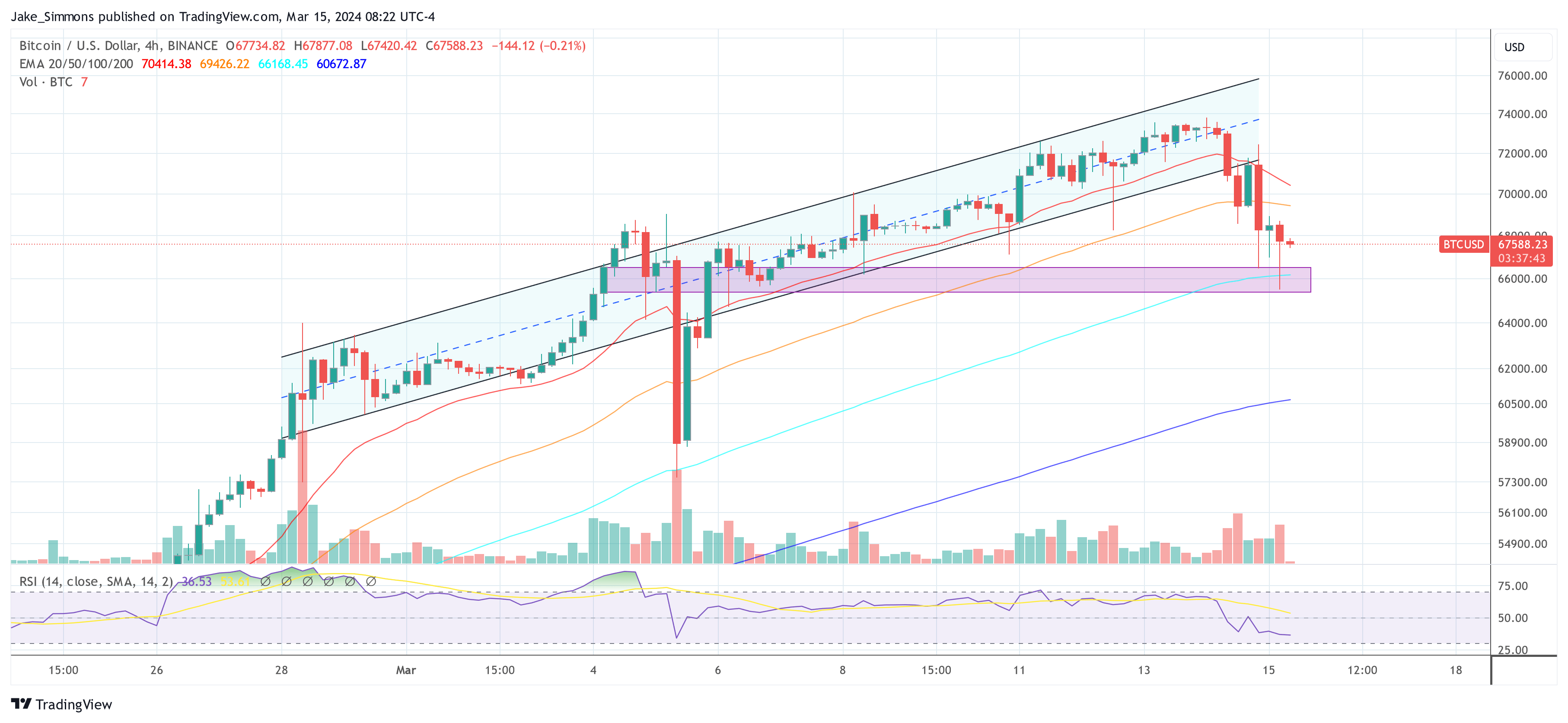The Bitcoin price has crashed from over $72,000 yesterday to as low as $65,500. As reported earlier today, there are several obvious reasons for this, such as the liquidation of extensive long positions on the red-hot futures market, expectations of a “higher for longer” policy by the US Federal Reserve as a result of hotter than expected inflation data and a relatively weak inflow day for the spot ETFs yesterday.
Did This Trigger The Bitcoin Crash?
However, there is also a rumor that reveals yet another hidden reason for the crash: a failed spread trade by a hedge fund that resulted in over a billion dollars in losses. Andrew Kang, the founder of Mechanism Capital, on X the intricate details of this debacle.“Apparently a fund blew out $1b+ on the MSTR-BTC spread trade today. They covered into the close which is why BTC dumped and MSTR premium went to the highs. PNL pocketed by based Saylor and will be put back into BTC.”
Kang had earlier elucidated the precarious nature of market transitions, citing the downfall of several major players due to flawed delta-neutral strategies. “You get some really wonky stuff that happens in market trend transitions. Like large delta-neutral funds/institutions getting blown out on ‘risk-free’ spread trades,” Kang remarked, pointing to past failures of notable firms like Blockfi, DCG, Genesis, Three Arrow Capital and Alameda.
MicroStrategy, under the leadership of Michael Saylor, has notably been a leveraged play on Bitcoin, with its substantial holdings often leading to significant interest from short sellers. According to Kang, “MSTR currently has $3b of short interest – roughly 20% of its float. I imagine a lot of that float is angry tradfi boomers trying to capture the premium to NAV.” The premium discrepancy Kang refers to—surging from 50% pre-ETF to 13% post-ETF, and recently peaking at 70%—illustrates the volatile dynamics at play between MicroStrategy’s stock value and its underlying Bitcoin holdings.Trade Gone Wrong
Renowned Bitcoin analyst Bit Paine and German crypto analyst Florian Bruce corroborated the narrative, pointing to the unwinding of a significant spread trade as the catalyst for the market movements. “That dip was because a fund blew up on their MSTR/BTC short,” Bit Paine . Bruce a clear exposition of the strategy gone awry: “A hedge fund set up a spread trade shortly before the ETF approval: Long BTC & Short MSTR. The idea behind it was that MSTR will fall through the ETF while BTC rises.” This explanation lays bare the hedge fund’s miscalculation, as the actual market response saw MSTR outperformed Bitcoin, necessitating a rapid unwinding of positions that contributed to Bitcoin’s sharp price decline. “BTC was sold and the shorts on MSTR were closed (MSTR bought). This is probably also the reason why MSTR has just had a small mini rally and is doing less badly than other BTC ETFs. Enjoy the dip. I don’t think it will last long,” Bruce stated.














